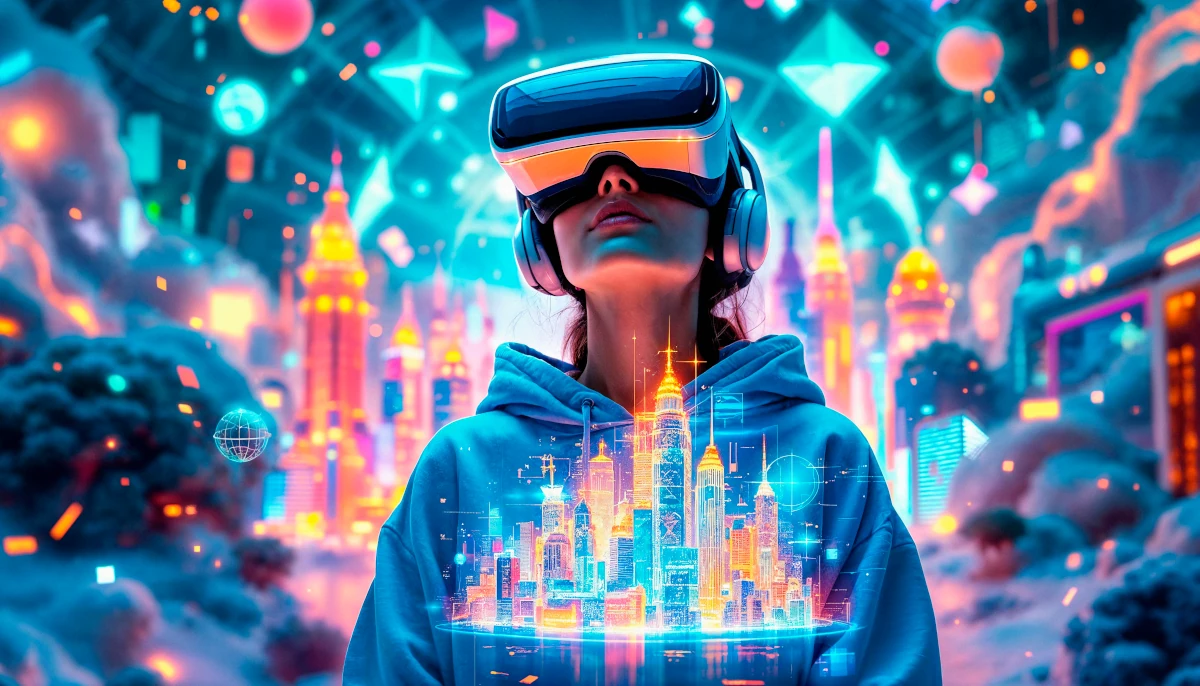The world of technology is evolving at an unprecedented pace, bringing innovations that are reshaping industries and transforming the way we live and work. Staying updated with the latest trends can help businesses and individuals prepare for the future and seize new opportunities. Here are five of the most impactful technology trends in 2025:
1. Generative AI: The New Creative Frontier
The first tech need to watch in technology trends in 2025 is Generative AI, powered by models like ChatGPT and DALL-E, has moved from experimental to mainstream applications. For instance, the global market for generative AI is projected to exceed $50 billion by 2025, with industries like marketing and entertainment adopting it to create tailored content and immersive experiences. This branch of artificial intelligence generates text, images, and even code, enabling businesses to automate creative and operational tasks efficiently.
Applications:
- Content creation for marketing and advertising.
- Enhanced customer support through AI-driven chatbots.
- Automating programming and software development tasks.
Future Potential: Generative AI is expected to play a key role in personalizing user experiences, automating workflows, and even creating virtual influencers or digital humans for brand engagement.
2. Quantum Computing: Solving the Unsolvable
Next to watch in technology trends in 2025 is Quantum computing is on the brink of breaking through into practical applications, but it still faces challenges such as error correction, scalability, and the high cost of maintaining quantum coherence. Addressing these issues is critical for unlocking its full potential. With its ability to perform complex calculations exponentially faster than traditional computers, it has enormous potential to revolutionize industries.
Applications:
- Drug discovery through advanced molecular simulations.
- Optimizing supply chain and logistics.
- Enhancing cybersecurity with quantum encryption.
Current Leaders: Tech giants like IBM, Google, and Microsoft are leading the race in quantum research, bringing us closer to unlocking its full potential.
3. Web3 and Blockchain: Redefining Digital Ownership
The third generation of the internet, known as Web3, emphasizes decentralization, privacy, and user empowerment. Blockchain technology underpins this revolution, enabling transparent and secure transactions.
Applications:
- Non-fungible tokens (NFTs) for digital asset ownership.
- Decentralized finance (DeFi) platforms offering financial services without intermediaries.
- Transparent supply chain tracking and verification.
Impact: Web3 is set to empower individuals by giving them greater control over their data and digital assets, fostering a more equitable internet. By leveraging blockchain technology, it eliminates the need for centralized intermediaries, reducing data breaches and enhancing privacy. Users can own and monetize their data directly, ensuring transparency and fairness in digital interactions.
4. Green Tech: Innovations for a Sustainable Future
With climate change being a global priority, green technology is advancing rapidly to reduce our environmental footprint. From renewable energy to sustainable manufacturing, green tech innovations are paving the way for a cleaner future. For example, breakthroughs in perovskite solar cells are making renewable energy more efficient and affordable, while advancements in bio-based plastics are reducing reliance on petroleum and lowering environmental impact.
Applications:
- Advanced solar and wind energy solutions.
- Next-generation battery technologies for electric vehicles (EVs).
- Carbon capture and storage technologies.
Adoption Trends: Businesses are increasingly adopting green tech to align with sustainability goals and regulatory requirements, while also appealing to environmentally conscious consumers.
5. AR and VR: Bridging the Digital and Physical Worlds
Augmented Reality (AR) and Virtual Reality (VR) are no longer limited to gaming. These technologies are finding applications across industries, creating immersive experiences for education, healthcare, and retail.
Applications:
- Virtual training programs for employees.
- AR-enhanced shopping experiences for customers.
- Immersive therapies and simulations in healthcare.
The Metaverse: As AR and VR converge in the Metaverse, users can expect seamless interactions in virtual environments for work, play, and socializing. Leading industries such as gaming, education, and retail are driving this transformation, with companies like Meta, Microsoft, and Nvidia pioneering the development of Metaverse technologies.
Conclusion
The rapid advancements in these technology in 2025 underscore the importance of staying ahead of the curve. Businesses must explore how these trends can be integrated into their operations to enhance efficiency, sustainability, and customer engagement. As individuals, understanding these developments can open up new career paths and opportunities.
The future is here, and these technologies are shaping it. Are you ready to embrace the change?
